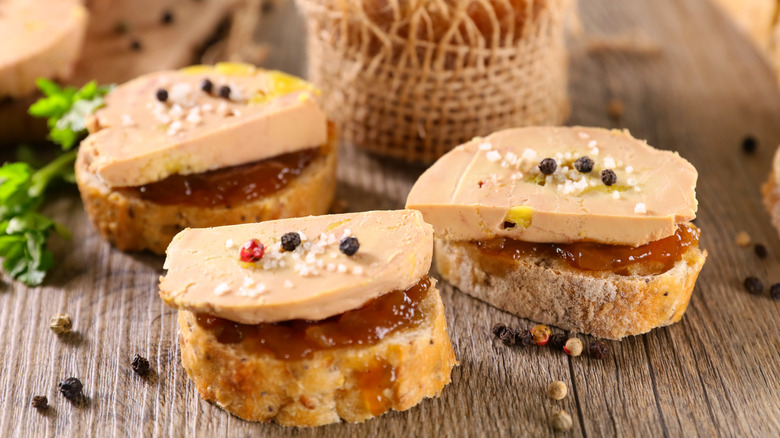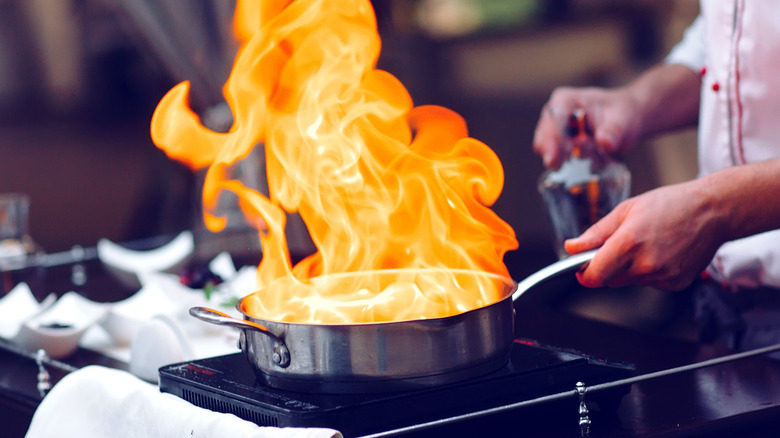The Cooking Mistake That Can Melt Your Foie Gras
Despite being the subject of innumerable animal welfare campaigns, legal bans, and, in some cases, threats of violence towards practitioners, foie gras remains a staple of French cuisine and a proud one at that (via The Guardian). Foie gras, according to Britannica, is a luxury food item derived from a duck or goose liver that has been fattened by the process of engorgement through force-feeding, or gavage. While its texture is delicate, its flavor is like an umami-packed butter thanks to the fat content of the liver.
Foie gras can easily be whipped into a mousse or pate and spread on crackers or toast (via On the Gas). Like other foods, different cooking methods change the characteristics of foie gras. One of the easiest methods, according to D'Artagnan, is to pan sear which will give your foie gras a beautiful outer sear. However, you need to be attentive when cooking over high heat. Things can go south very quickly if you're not paying close enough attention.
Potential high heat pitfalls
Think of cooking foie gras the way you would a nice steak. You want the pan hot enough to get that crispy caramelization on the outside without overcooking it. The biggest difference between the two is that while a steak will simply become overdone, foie gras will melt and burn. According to The Gilded Fork, if foie gras is exposed to high heat for too long both sugars and fat in the liver will leach out. This rapidly melting combination in the overheated pan will create an unpleasant concoction of burned sugars and fats.
Common high-heat cooking methods include grilling, pan searing, sautéing, or even braising. However, the general method of searing foie gras remains the same. If you find yourself with thicker-cut medallions of foie gras, season them promptly with salt and pepper. It's best that they be chilled, but not frozen, so they best retain their shape. Preheat the pan so that it is screaming hot and sear the foie gras for between 30 to 60 seconds per side. This will preserve the texture and shape of your foie gras, while simultaneously creating a wonderfully crispy crust. You can extend your sear to two minutes if you have particularly thick medallions, but any longer will run the risk of melting and burning (via Gourmet Food Store).

